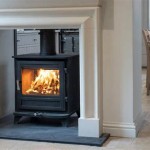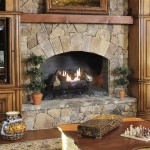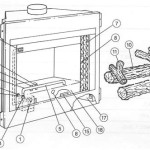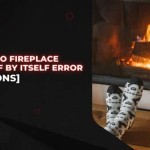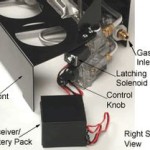Large Gas Fireplaces: Enhancing Ambiance and Heating Efficiency
Large gas fireplaces serve as prominent focal points in residential and commercial spaces, offering a blend of aesthetic appeal and functional heating capabilities. Their substantial size distinguishes them from standard gas fireplaces, enabling a more significant visual impact and potentially a higher heat output. This article explores various aspects of large gas fireplaces, including their design considerations, installation processes, performance characteristics, and maintenance requirements.
The selection of a large gas fireplace involves a multifaceted decision-making process. Considerations extend beyond mere aesthetics to encompass factors such as the room's dimensions, the desired heat output, the existing architectural style, and budgetary constraints. A comprehensive evaluation of these elements ensures the chosen fireplace seamlessly integrates into the intended environment while meeting the specific heating needs of the space.
Design and Aesthetic Versatility
Large gas fireplaces are available in a diverse range of designs, allowing for customization to suit various interior design preferences. Common configurations include linear fireplaces, which are characterized by their elongated horizontal shape, and traditional models that emulate the appearance of wood-burning fireplaces. Linear fireplaces offer a contemporary aesthetic, often featuring minimalist designs and clean lines, making them well-suited for modern spaces. Traditional models, on the other hand, typically incorporate features such as realistic log sets, brick liners, and decorative mantels to replicate the classic look of a wood-burning hearth.
Beyond the overall configuration, numerous customization options are available. These options include choices for the firebox lining, the type of media used (e.g., glass beads, river stones, ceramic logs), the material of the surround (e.g., stone, tile, metal), and the finish of the mantel. The ability to personalize these elements allows homeowners and designers to create a fireplace that perfectly complements the existing décor and reflects their individual tastes. The visible flame and ember bed contribute significantly to the overall ambiance, and manufacturers often offer adjustable flame heights and ember bed intensities to fine-tune the visual effect.
Framing and finishing the surrounding wall can dramatically enhance the visual impact of a large gas fireplace. Popular options include building a custom mantelpiece, installing decorative tile or stone, or creating a recessed niche to house the fireplace. Thoughtful consideration of these details can transform the fireplace into a stunning architectural feature that elevates the overall aesthetic of the room.
Installation Requirements and Safety Considerations
The installation of a large gas fireplace is a complex undertaking that requires adherence to stringent safety regulations and building codes. It is highly recommended that installation be performed by qualified and licensed professionals who possess the necessary expertise and experience. Proper installation is crucial to ensure the safe and efficient operation of the fireplace and to prevent potential hazards such as gas leaks or carbon monoxide poisoning.
The installation process typically involves several key steps, including: venting system installation, gas line connection, and electrical connection. The venting system is responsible for safely removing combustion byproducts from the fireplace, and it must be installed according to the manufacturer's specifications and local building codes. The gas line connects the fireplace to the gas supply, and it must be properly sized and installed to ensure adequate gas pressure. The electrical connection provides power for the ignition system, the blower (if applicable), and any other electronic components.
Safety features are paramount in large gas fireplaces. These fireplaces often incorporate safety mechanisms such as flame failure detection systems, which automatically shut off the gas supply if the flame is extinguished, and overheat protection devices, which prevent the fireplace from overheating. Regular inspection and maintenance of these safety features are essential to ensure their proper functioning and to maintain a safe operating environment.
Building codes and permitting requirements vary depending on the location. Before commencing any installation work, it is essential to consult with local building officials to obtain the necessary permits and to ensure compliance with all applicable regulations. This proactive approach helps to avoid potential delays and penalties and ensures that the installation is performed legally and safely.
Performance and Heating Efficiency
Large gas fireplaces offer a significant heat output, making them capable of effectively heating substantial areas. The heating capacity of a gas fireplace is typically measured in British Thermal Units (BTUs), and larger fireplaces generally have higher BTU ratings. The appropriate BTU rating for a particular space depends on factors such as the room's size, insulation levels, and climate conditions. Consulting with a heating professional can help determine the optimal BTU rating for the desired level of heating.
The efficiency of a gas fireplace refers to its ability to convert fuel into usable heat. Modern gas fireplaces are often designed with features that enhance their efficiency, such as sealed combustion chambers, which prevent the escape of heated air, and electronic ignition systems, which eliminate the need for a standing pilot light. These features can significantly reduce energy consumption and lower heating costs.
Many large gas fireplaces are equipped with blowers or fans that circulate heated air throughout the room. These blowers can significantly improve the distribution of heat and enhance the overall heating effectiveness of the fireplace. Blower speed is often adjustable, allowing users to customize the airflow to their preferences.
The type of gas used (natural gas or propane) can also affect the performance of a gas fireplace. Natural gas is typically less expensive than propane, but propane may be a more suitable option for areas where natural gas is not available. The fireplace must be specifically designed and configured for the type of gas being used to ensure proper combustion and optimal performance.
Beyond heating, the ambiance provided by a large gas fireplace is a significant benefit. The flickering flames and glowing embers create a warm and inviting atmosphere, enhancing the overall comfort and appeal of the space. Many models offer adjustable flame height and ember bed intensity, allowing users to customize the visual effect to their liking.
Remote control operation is a common feature in modern large gas fireplaces, providing convenient control over the fireplace's functions. Remote controls typically allow users to adjust the flame height, blower speed, and thermostat settings, as well as to turn the fireplace on and off from a distance.
Some advanced models incorporate smart home integration, allowing users to control the fireplace using their smartphones or other smart devices. This feature enables remote monitoring and control of the fireplace, providing added convenience and energy savings.
Overall, the performance and heating efficiency of a large gas fireplace depend on a combination of factors, including the BTU rating, the efficiency rating, the presence of a blower, and the type of gas used. Selecting a fireplace with the appropriate specifications and features is essential to ensure optimal heating performance and energy savings.
Maintenance and Longevity
Regular maintenance is crucial for ensuring the long-term performance and safety of a large gas fireplace. Proper maintenance helps to prevent potential problems, such as gas leaks, carbon monoxide buildup, and inefficient operation. A comprehensive maintenance schedule should include regular inspections, cleaning, and component replacements.
Annual inspection by a qualified technician is highly recommended. The technician can inspect the gas line, venting system, burner assembly, and safety features to identify any potential problems and perform necessary repairs or adjustments. This proactive approach helps to prevent minor issues from escalating into more serious and costly problems.
Cleaning the fireplace is an essential part of routine maintenance. The glass door should be cleaned regularly to remove soot and debris that can accumulate over time. The burner assembly should also be cleaned periodically to remove any dust or debris that may obstruct the gas flow. Using the appropriate cleaning products and techniques is important to avoid damaging the fireplace components.
Component replacements may be necessary over time. The igniter, thermocouple, and gas valve are common components that may need to be replaced due to wear and tear. Replacing these components as needed helps to maintain the fireplace's optimal performance and safety.
The venting system should be inspected and cleaned regularly to ensure proper airflow and to prevent the buildup of creosote or other debris. A blocked venting system can lead to dangerous carbon monoxide buildup and can also reduce the fireplace's efficiency.
Proper operation techniques can also contribute to the longevity of a gas fireplace. Avoiding excessive use, using the fireplace only when needed, and following the manufacturer's instructions for operation can help to extend the lifespan of the fireplace.
In summary, regular maintenance, including annual inspections, cleaning, and component replacements, is essential for ensuring the long-term performance and safety of a large gas fireplace. By following a comprehensive maintenance schedule and using proper operation techniques, homeowners can enjoy the benefits of their fireplace for many years to come.

Traditional Premium Gas Fireplaces Made In America Fireplace Xtrordinair

Large Fireplaces Friendly Fires

4237 Clean Face Gas Fireplace Energy House

E44 Large Gas Insert Call For 4998

Lri6e Large Traditional Gas Fireplace Insert Regency

Traditional Premium Gas Fireplaces Made In America Fireplace Xtrordinair

Kozy Chaska 335s Large Gas Insert Fireplace S Hearth Home

Liberty Lri6e High Efficient Large Gas Insert Fireplace S Hearth Home

Enviro E44 Large Gas Insert Colorado Hearth And Home

Kingsman Hb4740 Large Traditional Gas Fireplace
Related Posts


